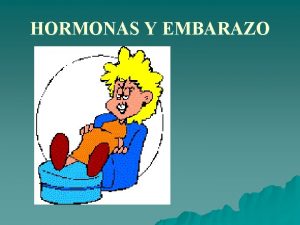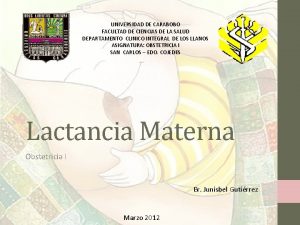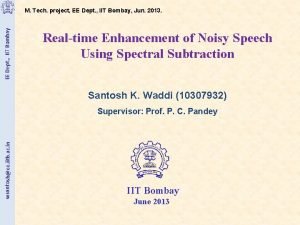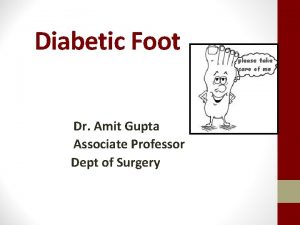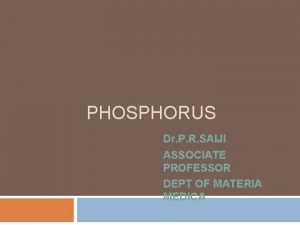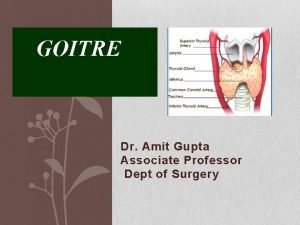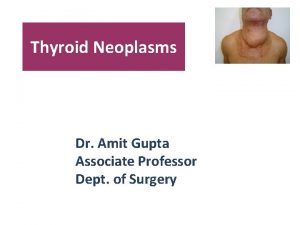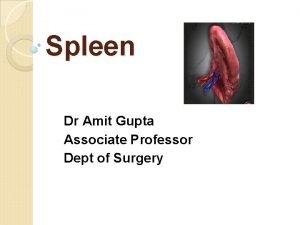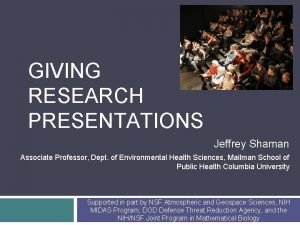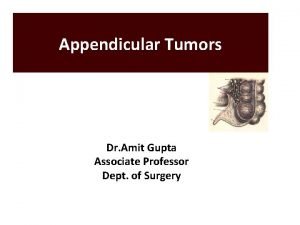LACTOGENESIS Dr Rehna T Associate Professor Dept of


















- Slides: 18

LACTOGENESIS Dr. Rehna. T Associate Professor Dept. of Pediatrics and Neonatology Al-Azhar Medical College Thodupuzha

• • Introduction Anatomy of breast Physiology of lactation Lactogenesis

Introduction • The best milk for a newborn baby is unquestionably the breast milk. • All babies must be exclusively breastfed till the age of 6 months.

• All newborns without any complications should be kept in skin to skin contact with their mothers during the first hour after birth to promote breast feeding & to prevent hypothermia

• Complementary food should be started after six months of age.

Anatomy of breast

AREOLA • The darker pigmented area around the nipple. IAP UG Teaching slides 2015 -16 7

Problem of nipple sucking • It's common in the first days of life for a baby to have trouble latching on or maintaining sucking at the breast. • If baby suckles only at the nipple, lactiferous sinuses which are below the areola are not emptied leading to poor secretion of milk.

HORMONAL INFLUENCES • Estrogen: stimulates the ductule system to grow. • Progesterone: increases the size of alveoli and lobes. • Prolactin: Helps in milk production During lactation, the alveolar cells make milk in response to the release of prolactin when the baby sucks at the breast. • Oxytocin: Milk ejection reflex Contraction of the smooth muscle layer of band-like cells surrounding the alveoli to squeeze the newly produced milk into the duct system. 9

Physiology of lactation

MILK EJECTION REFLEX • Oxytocin is produced by the posterior pituitary gland in response to stimulation to the nerve endings in the nipple by suckling as well as by thought, sight or sound of the baby • Oxytocin is responsible for contraction of myoepithelial cells. • Milk is then emptied from the alveoli to the lactiferous ducts. • Reflex is affected by mothers emotions, relaxed, confident attitude helps the milk ejection reflex. • On the other hand, tension & stress will hinder the milk flow. IAP UG Teaching slides 2015 -16 11

PROLACTIN REFLEX (Milk Secretion Reflex) • Sucking acts as the afferent stimulus, where the nerve endings in the nipple carry the impulses to the anterior pituitary which in turn releases prolactin • The prolactin is then released in the blood stream & induces cells of the alveoli to produce milk & distends it. • The more the baby sucks the greater the milk production.

FACTORS DECREASING MILK PRODUCTION • Dummies, pacifiers, bottles. • Painful breast conditions like sore or cracked nipple & congested breast. • Giving sugar water, honey, prelacteal feeds. • Lack of night feeding interfering prolactin production. 13


COMPOSITION OF BREAST MILK COLOSTRUM: • Secreted during initial 3 -4 days after delivery. • Small quantity, yellow thick. • Contains-large amount of proteins & immunoglobulins, vitamin A, D, E, K. TRANSITIONAL MILK: • Secreted after 3 -4 days up to 2 weeks. • Rich in fat & sugar content 15

MATURE MILK: • Thinner & watery. • Contains all essential nutrients. FORE MILK: • Secreted in the start of feed. • Watery, rich in protein, sugar, vitamins, minerals &water. • Satisfies babies thirst. HIND MILK: • Richer in fats. • Comes later towards end of the feeds. • Provides more energy, gives the sense of satiety. 16

Importance of emptying full breast • Baby gets both fore milk(rich in water) and hind milk(rich in fats). • Also helps mother to avoid problems of breast engorgement • Skipping or delaying feedings can cause breasts to become engorged (overly full), which in turn slows the flow of blood to the alveoli (milk-producing cells) and decreases milk production.

 Promotion from assistant to associate professor
Promotion from assistant to associate professor Lactogenesis y lactopoyesis
Lactogenesis y lactopoyesis Lactogénesis
Lactogénesis Central islip fire department
Central islip fire department Worcester ma inspectional services
Worcester ma inspectional services Hoe dept
Hoe dept Ee dept iitb
Ee dept iitb Dept. name of organization (of affiliation)
Dept. name of organization (of affiliation) Pt dept logistik
Pt dept logistik Dept nmr spectroscopy
Dept nmr spectroscopy Florida dept of agriculture and consumer services
Florida dept of agriculture and consumer services Gome dept
Gome dept Gome dept
Gome dept La revenue dept
La revenue dept Rowan county medicaid
Rowan county medicaid Dept. name of organization
Dept. name of organization Lafd interview questions
Lafd interview questions Dept ind onegov
Dept ind onegov Ohio dept of dd
Ohio dept of dd

